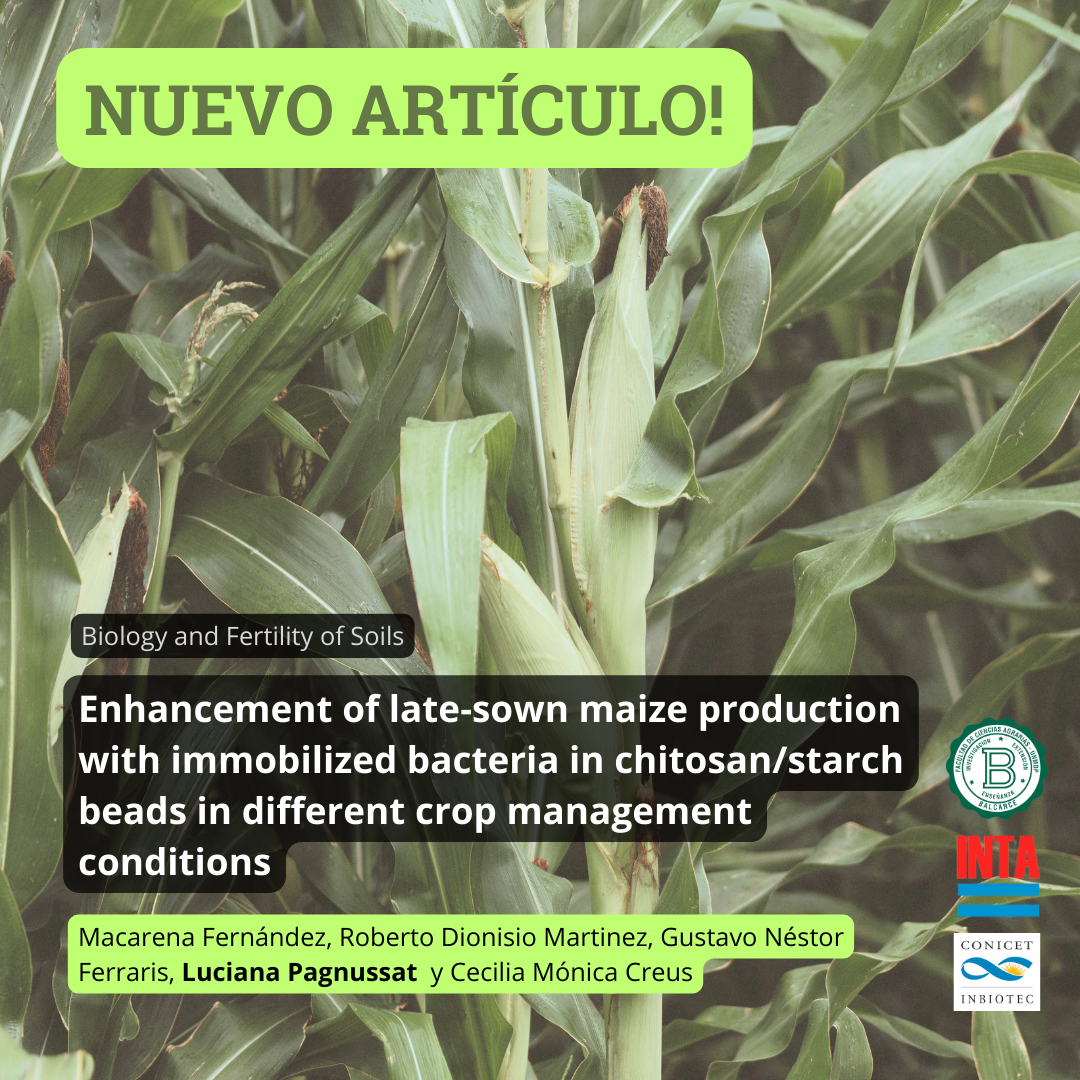Biology and Fertility of Soils, SHORT COMMUNICATION Published: 20 January 2024, 2024
Abstract
Immobilization of plant growth-promoting rhizobacteria in biodegradable polymeric matrices has the potential to improve crop yield and overcome rhizosphere challenges. Previously, we demonstrated that beads prepared from blends of chitosan/starch are useful carriers for bacterial consortia applied to maize seeds, increasing seedlings growth. This work aimed to examine the application of Azospirillum argentinense and Pseudomonas rhodesiae co-immobilized in chitosan/starch beads as inoculants in late-sown maize crops under different environments and agronomic managements. We compared the ability to promote maize crop yield of co-immobilized bacteria with their liquid counterparts. We also analyzed if co-immobilized bacteria could compensate yield for the decline in resource availability caused by high-density sown. Our results revealed that in environments with limiting edaphic-climatic conditions for potential crop growth, maize inoculation with liquid formulations exhibited yield instability and unpredictability. Furthermore, when resources were limited by high plant density, only bead mediated inoculation maintained crop yield. The component responsible for the increase in yield caused by inoculation also varied depending on the environment. The weight of thousand grains explained the increase in yield at high yielding potential environment, whereas the number of grains explained the increase at lower yielding environment. The evidence collected here demonstrates that chitosan/starch beads are suitable for delivery of bacteria consortia as inoculants and more efficient than liquid inoculation, broadening the range of inoculant applications to diverse geographic areas and crop management


